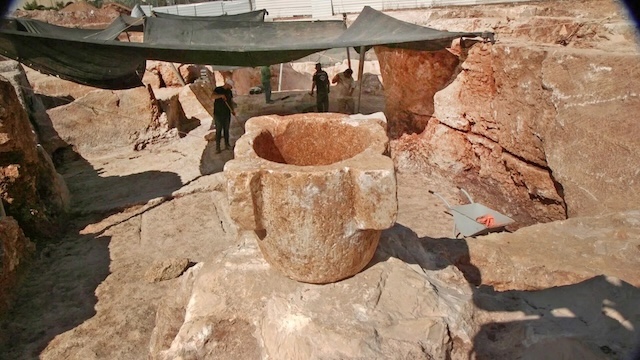Recent excavations in Mount Hotzvim, Jerusalem, have led to an extraordinary discovery that resonates with the deep historical and biblical past. Archaeologists from the Israel Antiquities Authority have uncovered large building stones in a quarry, which they believe were used to pave the very roads walked by Jesus during the Second Temple period. These findings have garnered significant attention due to their connection with ancient Jerusalem and the broader history of the Second Temple, bringing to light more details about the construction techniques and materials used during that era.
The Significance of Mount Hotzvim’s Quarry Excavation
The excavation at Mount Hotzvim covers approximately 3,500 square meters and is part of a much larger archaeological site in the heart of Jerusalem. The site is believed to have been an active quarry during the Second Temple period, a time when major state construction projects were underway across the city. Excavation managers Michael Tchernin and Lara Shilov of the Israel Antiquities Authority suggest that the stones found in this quarry were intended for use in significant state building efforts.
What makes these stones particularly noteworthy is their size and craftsmanship. The building stones measure about eight feet in length, four feet in width, and one foot in thickness. Each stone is estimated to weigh approximately 2.5 tons. This massive scale suggests that the stones were not just ordinary building materials but were meant for grand public works and potentially, as scholars suggest, for paving the streets of Jerusalem.
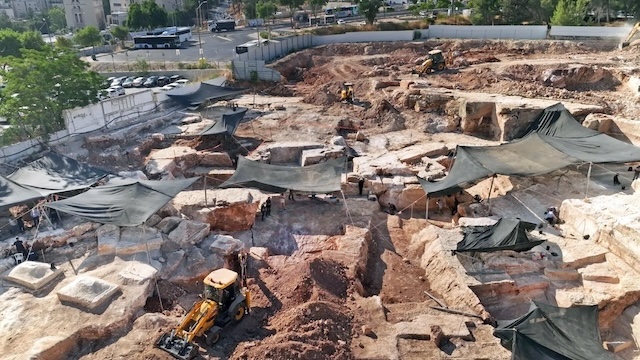
Stones Likely Used for Jerusalem’s Streets
Among the many discoveries at Mount Hotzvim, the archaeologists have found building stones that share remarkable similarities with the stone slabs used to pave the streets of Jerusalem, specifically the famed “Pilgrim’s Road.” This road is historically significant because it is believed to have been used by Jewish pilgrims and by Jesus himself during his visits to the Second Temple. The discovery of stones that match in size, thickness, and geological composition to those used on the Pilgrim’s Road is a testament to the site’s significance.
These ancient stones, unearthed in one of the busiest trade centers of ancient Jerusalem, add to the body of evidence indicating that the quarry served as a central hub for large-scale building projects during the late Second Temple period.
The Pilgrim’s Road: A Path of Historical and Religious Significance
The connection to Pilgrim’s Road makes this discovery even more fascinating. Pilgrim’s Road is a paved street that Jewish pilgrims took from the Pool of Siloam up to the Temple Mount. It holds great religious importance, as it is believed to have been one of the paths that Jesus walked on during his time in Jerusalem.
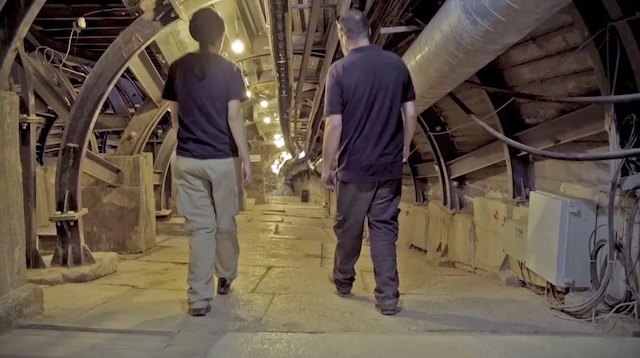
This paved street, also known as the “via pilgrims” or “terraced street,” has long been considered a vital route for those making their pilgrimage to the Temple. The discovery of these stones matching those used in its construction has furthered the understanding of how Jerusalem’s infrastructure was developed during the Second Temple era. As described in a press release by the Israel Antiquities Authority, the paving stones from Mount Hotzvim are nearly identical to those used for Pilgrim’s Road in size, shape, and material, reinforcing the idea that they came from the same quarry.
The Second Temple Period: Historical Context
The Second Temple period, which lasted from 349 BCE to 70 CE, was a time of great transformation for Jerusalem. During this time, the city was subject to the rule of foreign powers such as the Persians, Greeks, and eventually the Romans. Despite these changes, the Jewish community maintained its cultural and religious practices, many of which centered around the Second Temple.
The Second Temple was not only a religious site but also a symbol of Jewish sovereignty and identity. It stood for 420 years and saw numerous renovations and expansions, including the construction of roads like the Pilgrim’s Road. This era was marked by political and religious conflicts, as well as periods of cultural flourishing. The quarry at Mount Hotzvim, which provided the materials for these grand construction projects, played a critical role in shaping the Jerusalem of that time.

Tools and Techniques: A Glimpse into Ancient Quarrying
Along with the large building stones, archaeologists have also unearthed tools and other artifacts that shed light on the techniques used by ancient quarry workers. One of the most significant findings is a stone tool believed to be over 2,000 years old. The tool, which was likely used by Jewish quarrymen during the Second Temple period, provides insights into the daily labor and craftsmanship involved in carving these enormous stones.
This tool may have been locally designed and manufactured at the quarry itself, or it might have been brought to the site for use by the quarrymen. Either way, its discovery offers a tangible connection to the workers who toiled to create the very stones that paved Jerusalem’s sacred streets.
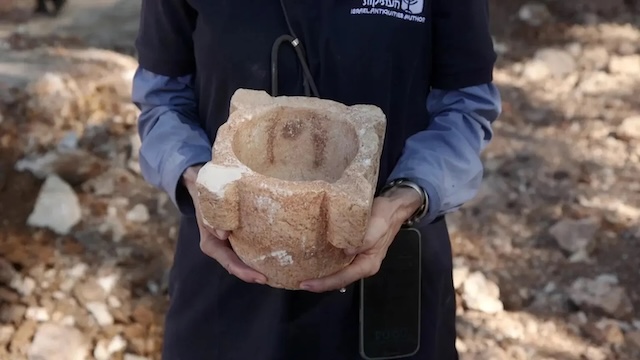
The Remarkable Preservation of the Pilgrim’s Road
The discovery of these stones not only connects to the Pilgrim’s Road but also highlights the exceptional preservation of ancient Jerusalem’s infrastructure. In 2019, the City of David unveiled a section of the Pilgrim’s Road, which had been remarkably well-preserved. This road, once hidden beneath modern Jerusalem, provides a direct link to the past, allowing visitors to walk on the same path that Jewish pilgrims—and likely Jesus—once traveled.
Former US ambassador to Israel, David Friedman, noted the profound impact of this discovery, stating, “It brings the Bible back to life.” The stones uncovered at Mount Hotzvim add another layer to this living history, offering new insights into the daily lives, religious practices, and monumental construction projects of the Second Temple period.
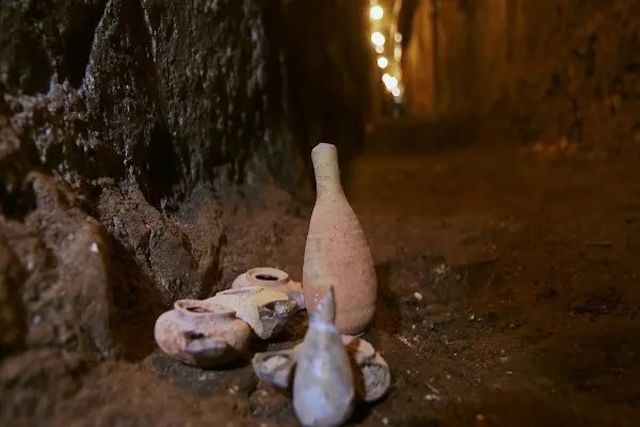
A Stunning Discovery: Bridging the Ancient and Modern Worlds
The stones unearthed at Mount Hotzvim represent more than just building materials; they are a bridge to a bygone era. Their connection to the Pilgrim’s Road and the Second Temple period helps paint a more complete picture of life in ancient Jerusalem. These discoveries allow modern archaeologists, historians, and visitors to engage directly with the past, immersing themselves in the history of one of the world’s most significant cities.
As archaeologists continue their work at Mount Hotzvim, there is no doubt that more discoveries will come to light, further deepening our understanding of Jerusalem’s ancient roads and the people who built them. The quarry, which once served as a source of raw materials for some of the most important construction projects in Jerusalem, remains a crucial part of Israel’s rich archaeological and historical heritage.

Conclusion
The discovery of ancient stones in Mount Hotzvim matching those used on Pilgrim’s Road is an extraordinary find that offers new insights into Jerusalem’s Second Temple period. The stones’ size, craftsmanship, and connection to one of the most significant religious routes in history emphasize the importance of this excavation. As archaeologists uncover more of Jerusalem’s past, each discovery brings the Bible and ancient history back to life, creating an enduring legacy that continues to fascinate and inspire.
